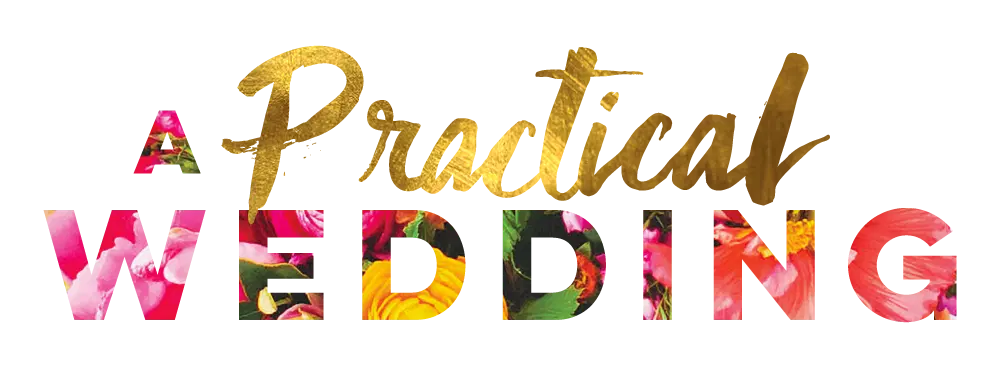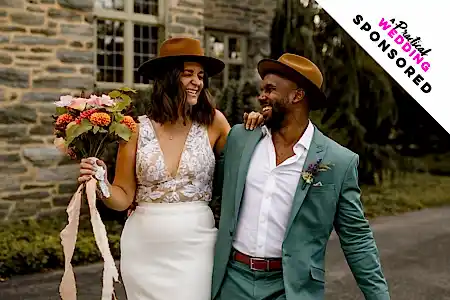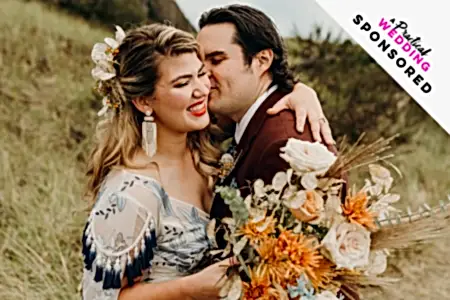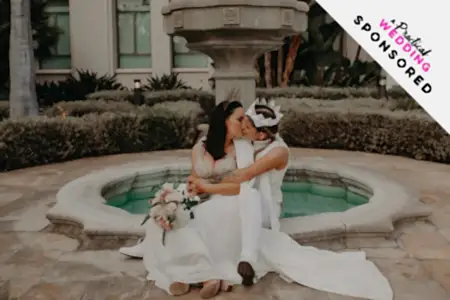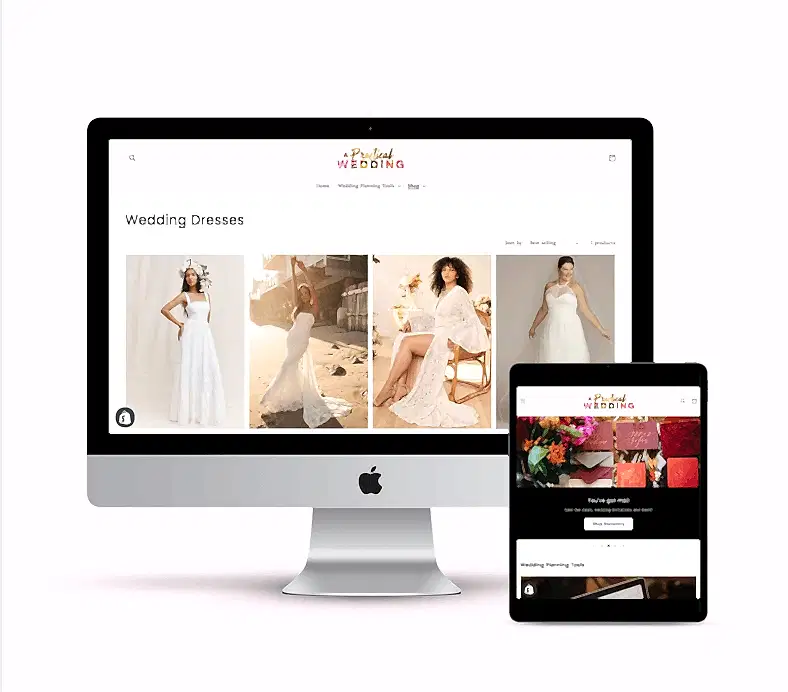
When I used to shoot weddings, my day would always start the same way. If there was a bride and a groom, I’d arrive at the bride’s getting ready space well in advance of her getting dressed, and start taking pictures. Usually my second shooter would start the day there with me to help capture details while I grabbed the documentary shots, and then she’d be dispatched to hang out with the groom at the tail end of his getting ready, when it would be guaranteed that he’d have pants on. (I’m sure my fellow photographers are more than aware of this occupational hazard, the groom-with-no-pants situation.) If there was no second shooter (and the couple wasn’t getting ready together, which bless, should probably happen way more often than it does), I wouldn’t see the groom until the bride did. Even though I considered myself a progressive, feminist wedding photographer, the message was always the same: the bride is the most important.
It’s not new or surprising information that the wedding industry is a mess of gendered messaging and expectations. It’s the bride’s day. The groom is merely window dressing. Messaging like this is not only damaging, but it’s also extremely othering for queer couples who might not fit into the bride/groom dichotomy. Worse, it often leads to that awful cringe-inducing question asked all too often of same-sex couples: Which one of you is the bride? For the most part, I’d like to think that we’re getting better at this. It’s now surprising, instead of expected, when I hear overtly gendered language thrown around in indie wedding media. And plenty of photographers have switched their contracts from listing Bride and Groom to listing Partner A and Partner B. But just because we’re making progress on the grand scale, doesn’t mean there aren’t tiny insidious ways that sexist tropes work their way into weddings. And sometimes I think it’s these less obvious behaviors that might be more damaging.
I’m looking at you, wedding photographers.

An APW reader recently emailed us to express dismay at the way her now-husband is covered in their wedding album. She wrote:
I was a little appalled when the photos came back at how little my husband and his groomsmen are actually in any of the pictures. I really should have talked to my photographer beforehand but it completely slipped my mind. Our groomsmen matter just as much to us as the bridesmaids, but they’re barely there after the “getting ready” photos. And my husband, who I think looked quite dashing in his own right, often ends up looking like a prop for pictures of me. I’m trying to put together our album and I can’t find a single picture where you can see his face but not mine—but there are tons where I’m the only one facing the camera.
The thing is, I know exactly how this happens. Weddings are hectic. When things get busy, photographers go into autopilot. And all of that intentional egalitarian business stuff they pride themselves on can go right out the window. It’s (mostly) not intentional. It’s just that there’s so much pervasive imagery in the wedding industry that puts the bride in center focus, so when you turn your brain off to keep up with the pace, the autopilot fills it with the familiar: bridecentric imagery that puts grooms on the back burner. But it’s not up to couples like aforementioned letter writer to change that. It’s up to us.

I won’t even pretend like I’ve been immune to this myself. When I first started to build my business, I took a workshop that included some basic posing. It was supposed to be our “in case of emergency” set. You know, for when the creative well runs dry and you don’t want your clients to think you’ve forgotten how to do your job (not that that ever happens… achem…) But then I went to shoot my first same-sex engagement session. And suddenly I realized I had no idea what to do for posing, because everything I’d been taught to keep in my back pocket was based on gender norms. They weren’t quite as obvious as, say, the bride on the ground at the groom’s feet shot. Instead, my poses included one where the bride is in focus, while the groom is slightly blurred in the background. Or one where the bride was resting her head on the groom’s shoulder, while the groom stood firm and manly, supporting her. More subliminal, but just as damaging. (Just because I wasn’t asking out loud which one was the bride, didn’t excuse the tiny blip in my brain that thought it.)

Most photographers probably don’t even realize it when they are buying into old school sexist wedding stereotypes. Because most photographers aren’t perpetuating them intentionally. It’s a reflex. And it’s often a lazy one. But it’s one that is so easy to fix. So here is a new back pocket wedding photography posing guide, to replace your old one:
- You have two clients, not one: I know a lot of men simply aren’t that into having their photo taken. And I know that for a lot of weddings, the bride will be the point of contact for planning. But that just means that the onus of responsibility is really on the photographer in those cases to give both clients equal time.
- One-for-one coverage: If you shoot a portrait of the bride, spend an extra minute getting one of the groom. If you’re going to shoot the bridesmaids during the ceremony, make sure to get the groomsmen too. The finished album should be about the couple and the people who are important to them, not half of that equation.

- Equal opportunity artsy photos: And if you’re going to do the artsy stuff where only one person is looking at the camera, or one partner is blurry, make it part of your arsenal to do a quick swap. “First I’m going to have (insert Partner A’s name here) look at me.” Then “Okay, now I want (insert Partner B’s name here) to look at me instead.” Ta-da. Progress. (Also, sometimes you end up getting really awesome photos when you switch things up, as evidenced by the above.)

- Stay away from heavily gendered posing: If you’re about to switch to autopilot, just ask yourself: how would this pose look if the roles were reversed? If the answer is “ridiculous,” you might be in danger of overtly gendered posing.
- Don’t Assume: As an industry, wedding photographers have decided that brides probably care enough about the end result to warrant some extra time and energy for photos. So let’s stop assuming that the groom doesn’t. No one wants to open up their wedding album to find that they got demoted from starring role to featured extra. (Besides, then we would have no groomals and that would be a tragedy.)

The wedding industry moves forward at a slow crawl. But that makes it all the more important to resolve to make these small but significant gestures towards more equal representation of brides and grooms. Because the closer we get to fixing that, the closer we get to the part where “Which one is the bride?” becomes a pointless question.
P.S. In case you missed it, don’t forget to check out our companion post “What if photographers shot grooms the same way they shoot brides?“
